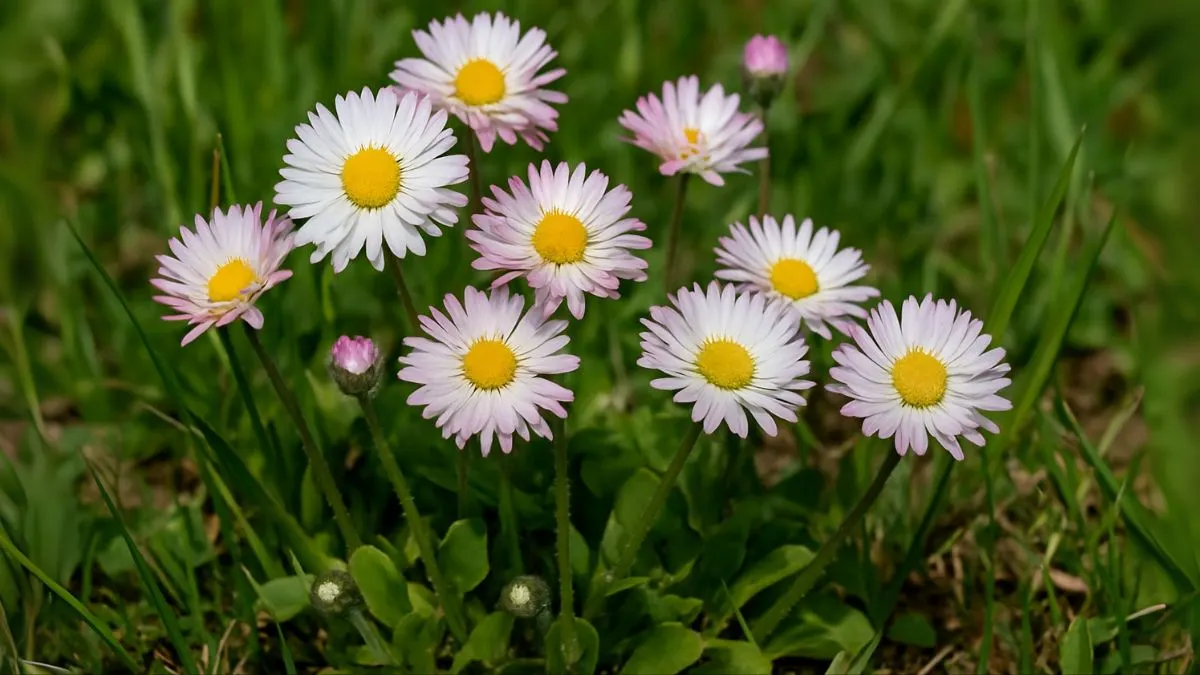Bellis flowers, often known as English daisies, bring a nostalgic charm to gardens with their cheerful, button-like blooms. Whether you’re in Canada, the USA, or anywhere else, their resilience and beauty make them a gardener’s delight. Best of all, Bellis perennis generally blooms from early to midsummer, with many varieties continuing until the first frost.
If you’re planning to add these flowers to your garden, this guide will walk you through everything you need to know about planting and caring for Bellis perennis.
Why Choose Bellis Flowers?

These perennial beauties are versatile and adaptable. They’re excellent for borders, rock gardens, and containers. While they are compact in size, their bright, vibrant colors stand out and complement other seasonal blooms.
What makes them special is their ability to bloom twice—once during spring to early summer with sporadic flowering till frost. That’s nearly a full season of color for minimal effort!
Best Growing Conditions
To grow strong, healthy Bellis plants, the right location is key. Always provide them with a location that receives full sun to partial shade and has well-draining, fertile soil amended with organic matter.
- Sunlight: While Bellis plants can cope with partial shade, they’ll bloom more abundantly with at least 6 hours of direct sunlight.
- Soil: They enjoy soil enriched with compost, ensuring both fertility and drainage.
- Climate: Hardy in USDA zones 4–8, they adapt well to cooler climates but may need some care during hotter summers.
In my own garden, I planted Bellis in both shaded and sunny spots. The ones in full sun flourished with dense, vibrant blooms, while the shaded ones offered more greenery than flowers.
Also Read: How to Plant and Grow Hydrangeas at Home
Planting Bellis perennis
Choose a planting location that receives partial to full sunlight. Prepare the soil by loosening it to about 8 inches deep and mix in compost or organic matter.
- Sow seeds directly in spring or autumn.
- Space seedlings 6–9 inches apart.
- Water gently after planting.
Once established, plant them in an area with full sun to partial shade, ensuring consistent moisture during the growing season.
Blooming Cycle
Bellis perennis generally blooms from early to midsummer, with additional bursts during spring to early summer with sporadic flowering till frost. Their dainty, button-like flowers add color long after other plants have faded.
This extended blooming cycle makes them a popular choice for continuous garden displays.
Watering and Feeding
Bellis flowers need consistent moisture but not soggy soil. Water regularly, especially during dry spells, but avoid waterlogging.
For best growth:
- Use organic fertilizer once a month during the growing season.
- Mulch lightly to retain soil moisture and regulate temperature.
Also Read: How to Grow Poppies From Seed (and Get Gorgeous Flowers!)
Bellis Flower Growing Guide
Requirement |
Best Practice |
Sunlight |
Full sun to partial shade |
Soil |
Well-draining, fertile soil amended with organic matter |
Blooming Season |
Spring to early summer; sporadic flowering till frost |
Watering |
Regular watering, keeping soil moist but not waterlogged |
Spacing |
6–9 inches apart for airflow and healthy growth |
Hardiness Zones |
USDA zones 4–8; adapts well in cooler climates |
Maintenance and Care
Caring for Bellis flowers is simple:
- Deadhead spent blooms to encourage continuous flowering.
- Divide clumps every 2–3 years to prevent overcrowding.
- Remove faded leaves to maintain neatness.
Since Bellis plants can cope with partial shade, they are perfect for mixed borders where other taller plants may cast shadows.
Personal Experience
When I first tried planting and caring for Bellis perennis in my backyard, I underestimated their resilience. Despite inconsistent watering, they continued to bloom gracefully. The key difference came when I amended the soil with compost and relocated them to a sunnier patch. Within weeks, the flowers doubled in number, creating a carpet-like effect that turned heads in the neighborhood.
This convinced me that Bellis truly are beginner-friendly flowers that reward even modest care.
So, if you want a splash of timeless elegance in your outdoor space, consider adding Bellis perennis to your collection. Their continuous blooms and adaptability make them a rewarding choice for gardeners of all skill levels.






